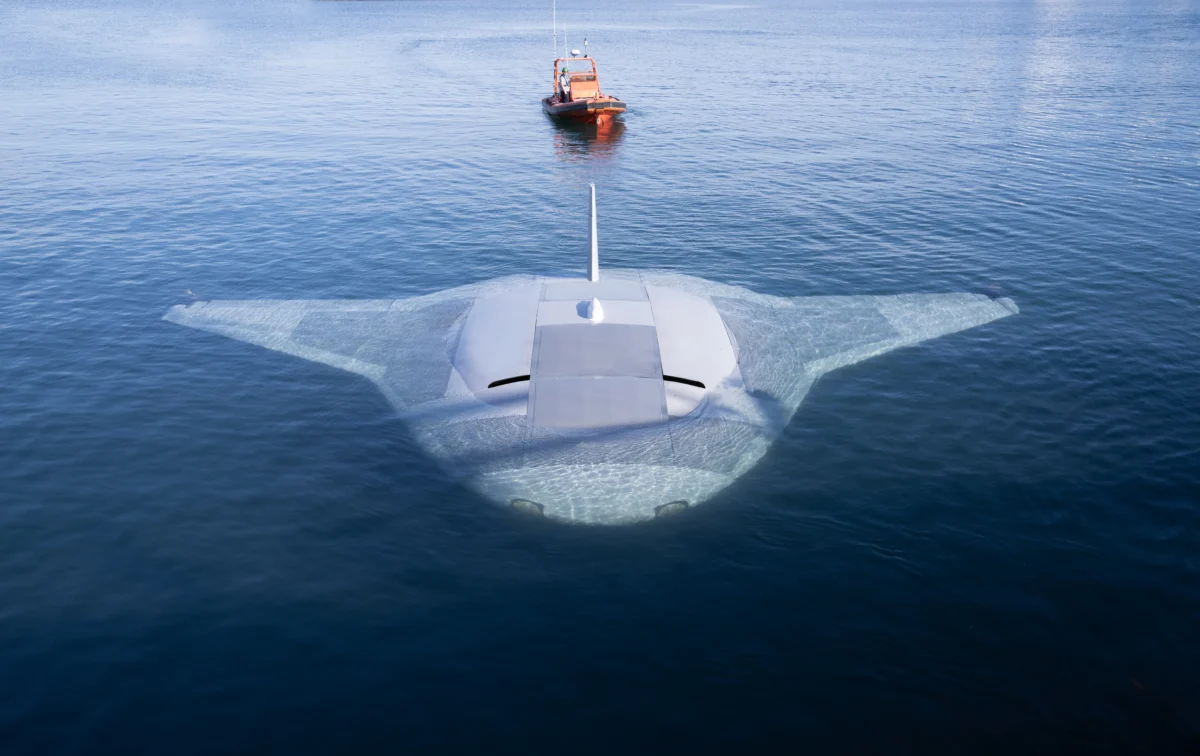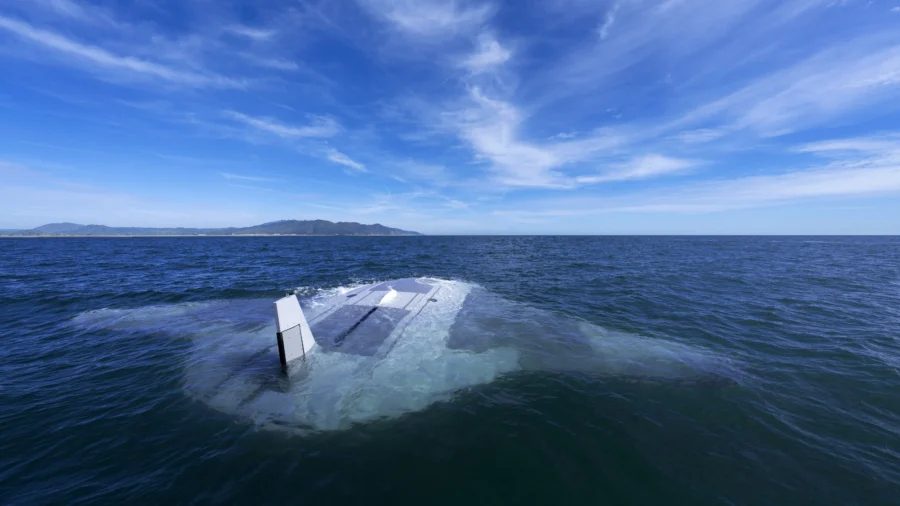The U.S. Navy released three new pictures of America’s newest underwater drone designed to operate long-range missions in maritime environments.
In a statement on May 1, the U.S. Department of Defense’s Defense Advanced Research Projects Agency (DARPA) announced that it has completed full-scale testing of the Manta Ray prototype uncrewed underwater vehicle (UUV).
The drone was tested off the coast of Southern California in February and March, DARPA said, noting tests included submerged operations using all the vehicle’s modes of propulsion and steering—buoyancy, propellers, and control surfaces.
Dr. Kyle Woerner, DARPA’s program manager for the Manta Ray, said the latest tests validate “the vehicle’s readiness to advance toward real-world operations after being rapidly assembled in the field from modular subsections.”
“The combination of cross-country modular transportation, in-field assembly, and subsequent deployment demonstrates a first-of-kind capability for an extra-large UUV,” Dr. Woerner said.
Northrop Grumman Corp., the U.S. defense company that manufactured the UUV, said the prototype was built in Maryland before being shipped to its test location in Southern California.
“Shipping the vehicle directly to its intended area of operation conserves energy that the vehicle would otherwise expend during transit,” Dr. Woerner said.
“Once deployed, the vehicle uses efficient, buoyancy-driven gliding to move through the water. The craft is designed with several payload bays of multiple sizes and types to enable a wide variety of naval mission sets.”
The autonomous craft is part of the Pentagon’s efforts to develop a new long-range submarine drone capable of moving through dynamic maritime environments for long periods without supervision or the need to refuel.
DARPA said they are engaging with the U.S. Navy on the next steps for testing and transition of this new class technology.

Race for Supremacy in Underwater Warfare
While the U.S. military’s successful completion of in-water testing is a significant milestone for America, it may not be alone in developing new underwater weaponry capable of operating long-range missions with high efficiency.
Last year, reports emerged that Russia had produced its first set of Poseidon nuclear-capable super torpedoes, a new category of retaliatory weapon capable of triggering radioactive ocean swells to render coastal cities uninhabitable.
“The first set of Poseidons have been manufactured, and the Belgorod submarine will receive them in the near future,” state news agency TASS quoted Russian defense sources as saying.
In 2018, Russian President Vladimir Putin first announced the new type of strategic nuclear weapon now known as Poseidon, confirming it would have its own nuclear power supply.
“They are very low noise, have high maneuverability, and are practically indestructible for the enemy. There is no weapon that can counter them in the world today,” Mr. Putin said at the time.
There are still few confirmed details about the Poseidon in the public domain, but it’s essentially a cross between a torpedo and a drone that can be launched from a nuclear submarine.
Russia’s Ministry of Defence has released videos of the 24-metre Poseidon—known as Kanyon by the North Atlantic Treaty Organization (NATO)—including simulations showing it destroying an enemy aircraft carrier and hitting the shoreline.
The U.S. Naval Institute said in a statement in May 2022 that Russia’s development of the megaton-class Poseidon “disrupts arms control and deterrence,” and turned assumptions about submarine-launched nuclear weapons upside down.
“Kanyon breaks all the traditional nuclear deterrence and classification rules. It is a nuclear-powered weapon, therefore possessing theoretically unlimited range,” the institute said.
“It has the potential to be both a strategic and tactical nuclear weapon and does not fall within the weapon definitions of the New START treaty,” it added, further pointing out that the nuclear weapon’s potential for autonomous operation “is perhaps most frightening.”
The New START treaty, first signed in 2010, is an agreement for nuclear arms reduction between Washington and Moscow and established limits on deployed strategic nuclear warheads.
Last year, Mr. Putin announced his decision to suspend Russia’s participation in the treaty.
Reuters contributed to this report.


